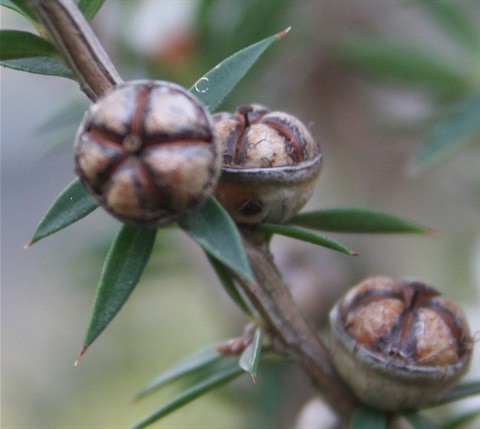
Leptospermum continentale
Prickly Teatree
Narrow upright prickly shrub with smooth bark on smaller stems, shedding in stringy strips.
Additional information
- SynonymSeparated from Leptospermum juniperinum
- FamilyMyrtaceae
- StoreyMiddle storey
- Size1-4 m x 1-2 m
- Plant groupingShrubs 1.5-10 m
- LeavesRigid prickly leaves, narrowly egg-shaped, broadest at base, concave, tiny teeth along the margins, 5-13 mm x 1-3.5 mm.
- Flower colourWhite
- Flowering timeOctober to March
- FlowersFlowers massed along stems, petals and sepals white, calyx and capsule hairless, capsules flaky with age, becoming rough.
- Bird attractingInsects
- Butterfly attractingNectar for butterflies
- Frog habitatNo
- Growing conditionsWell drained to moist sandy and light clay soils. Widespread in woodland, heathlands and beside watercourses. Frost and snow tolerant. Full sun to partial shade.
- Garden useAn adaptable plant which can be very narrow, or more bushy. Pruning beneficial. Excellent habitat plant or for directing pedestrian traffic. Very floriferous.
- Commercially availableAustralian plant & indigenous nurseries
- Conservation statusWidespread within the Shire
- Aboriginal Use Wood - spears, pegs
- Related speciesLeptospermum scoparium is recorded from a Belgrave South site. It is distinguished from L. continentale by the leaves which are narrowly elliptic to almost circular, broadest near the middle, 7-22 mm x 2-7 mm. Locally it is taller and leafier than Prickly Tea-tree.
Photo Gallery
Photographer/s: 1, 3, 4 Marilyn Bull ©; 2 Healesville Sanctuary ©
Plant Communities